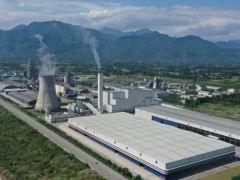据油价网7月22日消息称,彭博新能源财经在周三发布的《2021年新能源展望》报告中表示,如果想在2050年前实现净零碳排放,未来30年,世界需要在绿色能源基础设施和供应方面投资173万亿美元。
根据BNEF的数据,如果各国政府和企业想要实现他们近几个月来竞相承诺的2050年净零排放目标,他们需要在未来30年投资92万亿美元至173万亿美元。
该研究公司表示,要想在2050年实现与净零世界相适应的能源转型,需要迅速扩大投资,并补充说,“实现净零的途径仍不确定。”
根据BNEF的说法,为了实现净零排放,全世界每年需要增加一倍以上的投资。这些投资将从目前每年约1.7万亿美元跃升至“未来30年平均每年3.1万亿至5.8万亿美元之间”。
BNEF认为,这十年对于让世界走上实现《巴黎协定》目标的轨道至关重要。
BNEF首席经济学家Seb Henbest说:“没有时间可以浪费了。如果世界要在本世纪中叶实现或接近实现净零排放,那么我们需要加快部署这十年的低碳解决方案——这意味着更多的风能、太阳能、电池和电动汽车,以及用于建筑物的热泵,工业上的回收和更多的电力使用,以及将生物燃料用于航运和航空。”
BNEF表示,资本支出将为投资者和金融机构创造机会,但没有具体说明谁将为这笔巨额支出买单。
如果世界要将全球变暖控制在2摄氏度或以下,它总共需要至少 30 万亿至 40 万亿美元的投资,用于能源系统和钢铁和水泥制造业等众所周知难以减少排放的行业的脱碳。这是Wood Mackenzie对支持越来越多国家实现能源转型和净零排放愿望所需投资的最低估计。
曹海斌 摘译自 油价网
原文如下:
Net-Zero 2050 May Need Up To $173 Trillion Investments
The world will need to invest up to $173 trillion in greener energy infrastructure and supply over the next 30 years if it wants to achieve net-zero carbon emissions by 2050, BloombergNEF said in its New Energy Outlook 2021 report published on Wednesday.
If governments and companies want to see the coveted 2050 net-zero emissions they have been racing to pledge in recent months, they would need to invest between $92 trillion and $173 trillion in the next three decades, according to BNEF.
The energy transition that would be compatible with a net-zero world in 2050 would need rapid scaling of investment, the research firm says, adding that “the route to net-zero remains yet uncertain.”
According to BNEF, the world needs to more than double yearly investments in order to achieve net-zero emissions. Those investments should jump from around $1.7 trillion annually at present to “somewhere between $3.1 trillion and $5.8 trillion per year on average over the next three decades.”
BNEF believes that this decade will be critical to set the world on a track that could allow it to reach the Paris Agreement targets.
“There is no time to waste. If the world is to achieve or get close to meeting net-zero by mid-century, then we need to accelerate deployment of the low-carbon solutions we have this decade – that means even more wind, solar, batteries, and electric vehicles, as well as heat pumps for buildings, recycling and greater electricity use in industry, and redirecting biofuels to shipping and aviation,” BNEF chief economist Seb Henbest said.
Capital expenditures will create opportunities for investors and financial institutions, BNEF says, but didn’t specify who will foot the enormous bill.
If the world is to come anywhere close to limiting global warming to 2 degrees Celsius or below, it will need, collectively, a bare minimum of $30 trillion to $40 trillion of investment in energy systems and decarbonization of industries where emissions are notoriously hard to abate such as steel and cement making. That’s Wood Mackenzie’s bare-minimum estimate of investments needed to support the energy transition and the net-zero emission aspirations of a growing number of countries.
免责声明:本网转载自其它媒体的文章,目的在于弘扬石化精神,传递更多石化信息,并不代表本网赞同其观点和对其真实性负责,在此我们谨向原作者和原媒体致以敬意。如果您认为本站文章侵犯了您的版权,请与我们联系,我们将第一时间删除。







